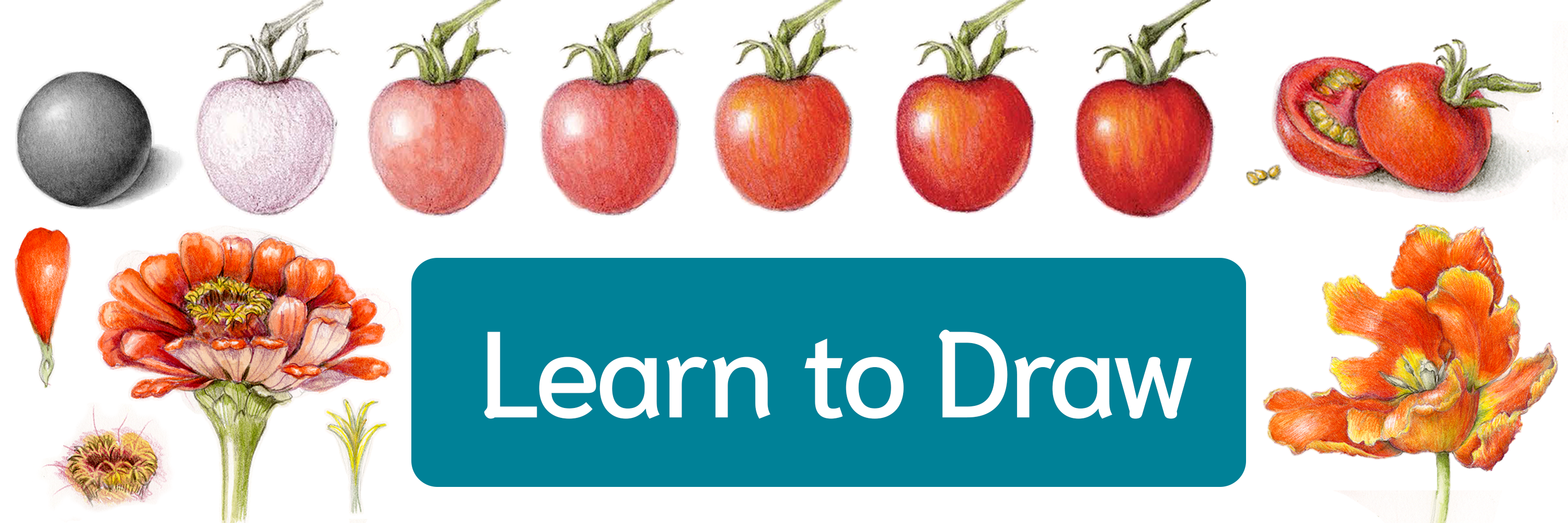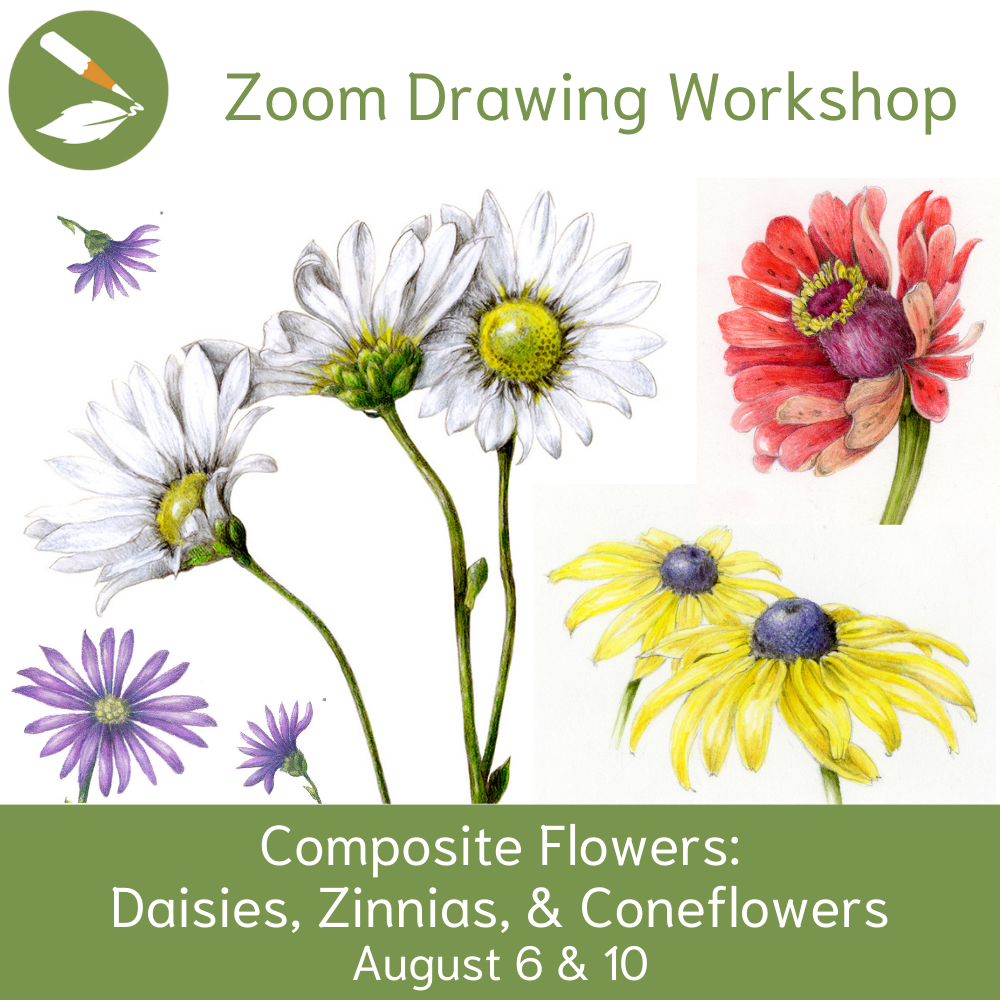A Botanical Illustrators’ Guide to Spot Plant Patterns & Draw What You See
Learning how to identify plant families is like discovering nature’s secret code, and it just so happens that observational drawing is one of the best ways to crack it.

As botanical artists, we notice delicate details that many people miss: how a flower’s petals are arranged, how leaves attach to their stem, or the structure of a seed pod. When you learn to observe these repeating patterns, you begin to see connections between plants, even ones that seem completely unrelated at first glance.
Peas and beans? Cousins. Broccoli and cauliflower? Basically siblings. Mint and lavender? Same family. Once you see the family resemblances, you can’t unsee them. And when you draw them, you start to understand them more and more.

Why Learn to Identify Plant Families?
If you’ve ever wondered what type of leaf you’re admiring on a hike, or stopped to smell and investigate the neighbor’s flowers, you’re already on the path. Learning about plant families helps you understand how plants are grouped and related, making it easier to recognize, remember, and draw them.
You don’t need to know Latin or be a botanist to get started. All you need is curiosity, some simple art supplies, and maybe a magnifying glass (to magnify the fun!). Step outside with your eyes open, feel your connection with nature grow stronger, and see your botanical art get better and better. Remember to celebrate your progress!
Once you know what to look for, you’ll be amazed at how many family traits you can spot in your own backyard. Just pay attention to patterns and trust your artistic eye.

What’s in a (Plant’s Scientific) Name?
Nomenclature in the plant kingdom can feel daunting at first, but it’s actually quite helpful (and even poetic) once you get the hang of it. It’s important to start with a basic understanding of “taxonomic classification,” which is just a fancy, academic way to say “hierarchy used to categorize based on shared traits.” See the example below that uses corn to demonstrate the names of its Domain, Kingdom, Phylum/Division, Class, Order, Family, Genus, and Species.

A common name is a simple name given to an individual plant species like “corn” or “rose.” But common names vary from region to region. One person’s “wild carrot” might be another’s “Queen Anne’s lace.” So botanists developed a universal naming system using Latin.
A scientific name typically consists of two parts: the genus and the species. Think of the genus like a family name, and the species like a first name:
🧅 Onion → Allium cepa
🧄 Garlic → Allium sativum
✏️ Allium is the genus shared by both, while cepa and sativum are the species.
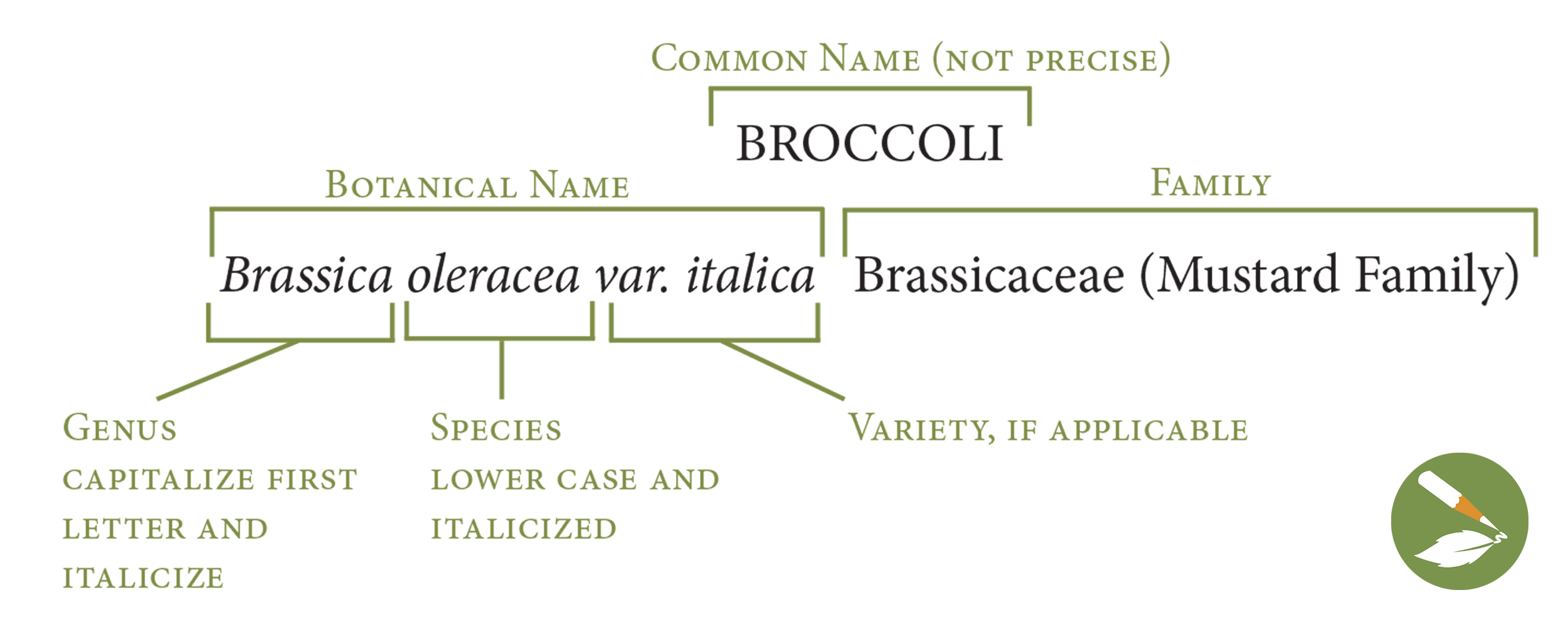
Genus names are always capitalized and italicized; species names are lowercase and italicized.
Plant families have common names too (like “Mustard Family”), but they also have one universal scientific name, usually ending in -eae. For example:
🥦 Mustard Family → Brassicaceae
🌱 Mint Family → Lamiaceae
🌹 Rose Family → Rosaceae

Within some families, you may also hear about a tribe—a smaller classification between genus and family. For example, in the Tulip Family (Liliaceae), Tulipa is considered a tribe or subfamily.
With over 380,000 known plant species in the world, grouped into around 600 plant families, this system helps us recognize patterns across seemingly unrelated species, and it’s a wonderful guide for botanical artists.
A Few Favorite Plant Families (and How to Spot Them)

🌼 The Aster Family (Asteraceae)
Includes: Sunflowers, daisies, dandelions, echinacea, and 30,000+ other species
Look for:
• Composite Flowerheads
• Center disk female flowers, florets that develop into seeds
• Outer large petals, called ligulate or ray florets, that house ray flowers often are male
• Or, the heads may be of all disc or all ray floret
Learn more about the Asteraceae Family here

🌱 The Mint Family (Lamiaceae)
Includes: Peppermint, lavender, rosemary, thyme, and 7,000+ other species
Look for:
• Square stems
• Opposite leaves
• Usually aromatic
• “Mouthy” flowers with 5 petals
Learn more about the Lamiaceae Family here

🥦 The Mustard Family (Brassicaceae)
Includes: Broccoli, radish, cabbage, kale, and 4,000+ other species
Look for:
• 4 petals and 4 sepals
• 6 stamens (4 tall, 2 short)
• 2-chambered ovary (seeds are produced in dry podlike fruits with a partition between the halves)
• “Spicy” flavor (try nibbling a wild mustard leaf!)
Learn more about the Brassicaceae Family here

🍓 The Rose Family (Rosaceae)
Includes: Roses, apples, raspberries, strawberries, and 3,000+ other species
Look for:
• Flowers with 5 sepals and separate petals in multiples of 5
• Many stamens (think “floral fireworks”)
• Delicious aromas!
• Leaves are oval or elliptic in shape with serrated edges, alternately arranged on the stem
• Often prickles or thorns
Learn more about the Rosaceae Family here
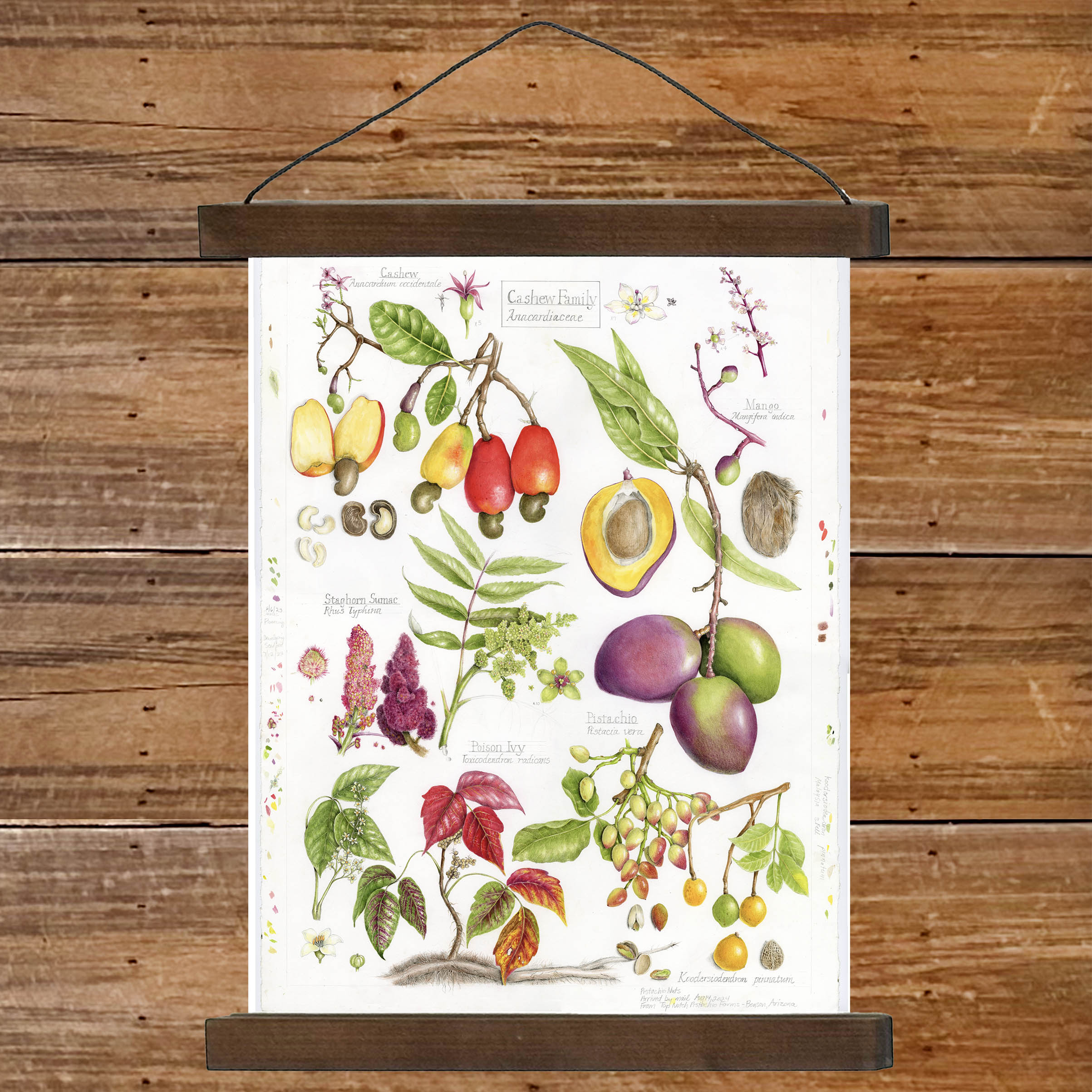
Welcome a Plant Family Portrait into your homes, studios, classrooms, or anywhere you’d like to invite in a little more nature, curiosity, and artistry.
Explore the collection of Plant Family Portrait Prints here, each one a tribute to the connectedness of the world, captured with watercolor, colored pencil, and care. Learn more about the project here.
Shop Prints

Botanical Scavenger Hunt: A Backyard Drawing Challenge
Let’s put this into practice with a fun (and delightfully educational) activity from my book The Practice of Botanical Drawing. This is beyond sketching—it’s a botanical scavenger hunt to help you explore plant families in your own neighborhood. You’ll observe, compare, and draw two related plants to highlight their family resemblances.
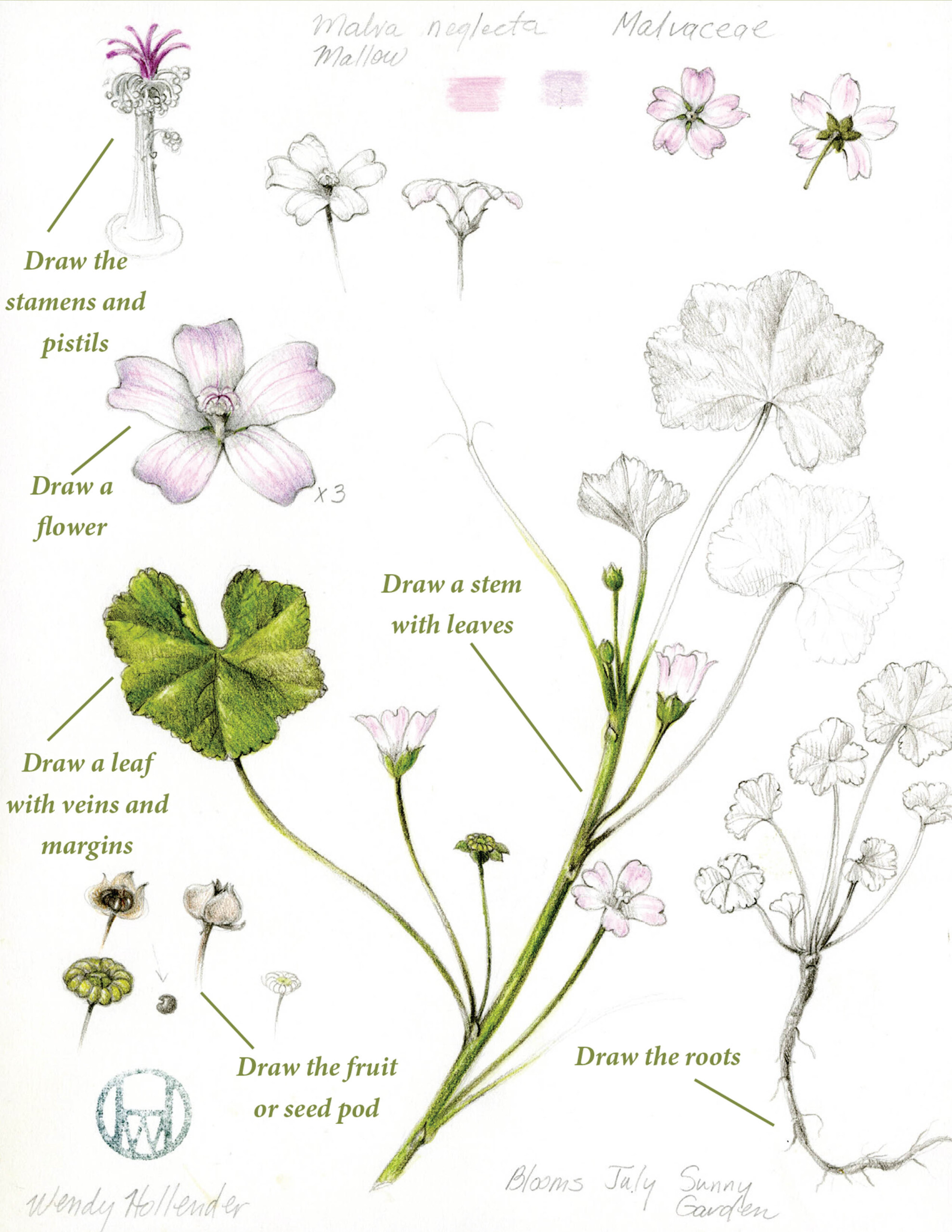
🌼 How to Begin:
1. Find a plant in bloom. Anything you can find will do!
2. Use the Plant Families Field Guide & Worksheet to look for matching characteristics and narrow down its family.
3. Draw what you observe:
• Flower (petals, stamens, pistils)
• Leaf shape and margins
• Stem structure
• Fruit or seed pod
• Roots
4. Now find its relative! Choose another plant that belongs to the same family. Compare and contrast both through drawing. Note what’s similar and what’s different.
👉 Use this worksheet to guide your exploration.
It helps you break down your plant into comparable parts and keep your observations organized as you sketch. It’s also a great tool for nature journaling or homeschool projects. The worksheet is from page 39 of The Practice of Botanical Drawing. Use the field guide on pages 37-38 in The Practice of Botanical Drawing (PDF or printed book) for more help identifying plant families.

Once You Start, You Won’t Want to Stop
Whether you’re a wildflower wanderer, herb garden enthusiast, or budding botanical artist, learning to identify plant families will open your eyes to the patterns and poetry in plants. And once you start seeing them, you won’t want to stop drawing!
Don’t worry about pronouncing or understanding Latin. Nature doesn’t mind if you can’t say their name, as long as you stay curious, sketch often, and enjoy connecting with them.
Happy drawing, foraging, and discovering,
Wendy Hollender & the Draw Botanical Team
